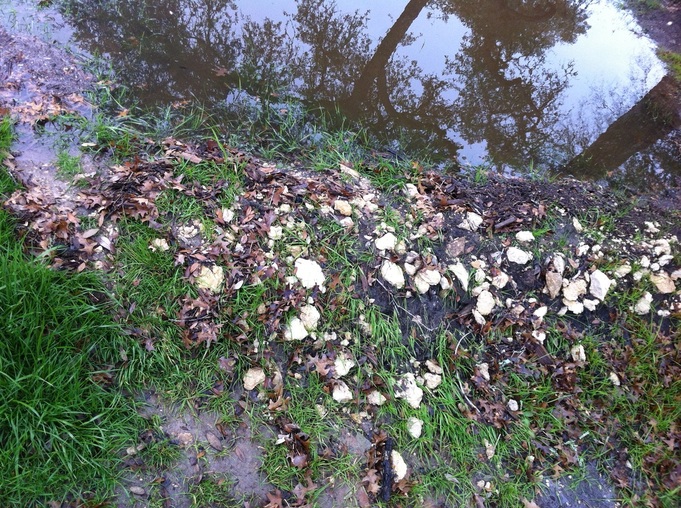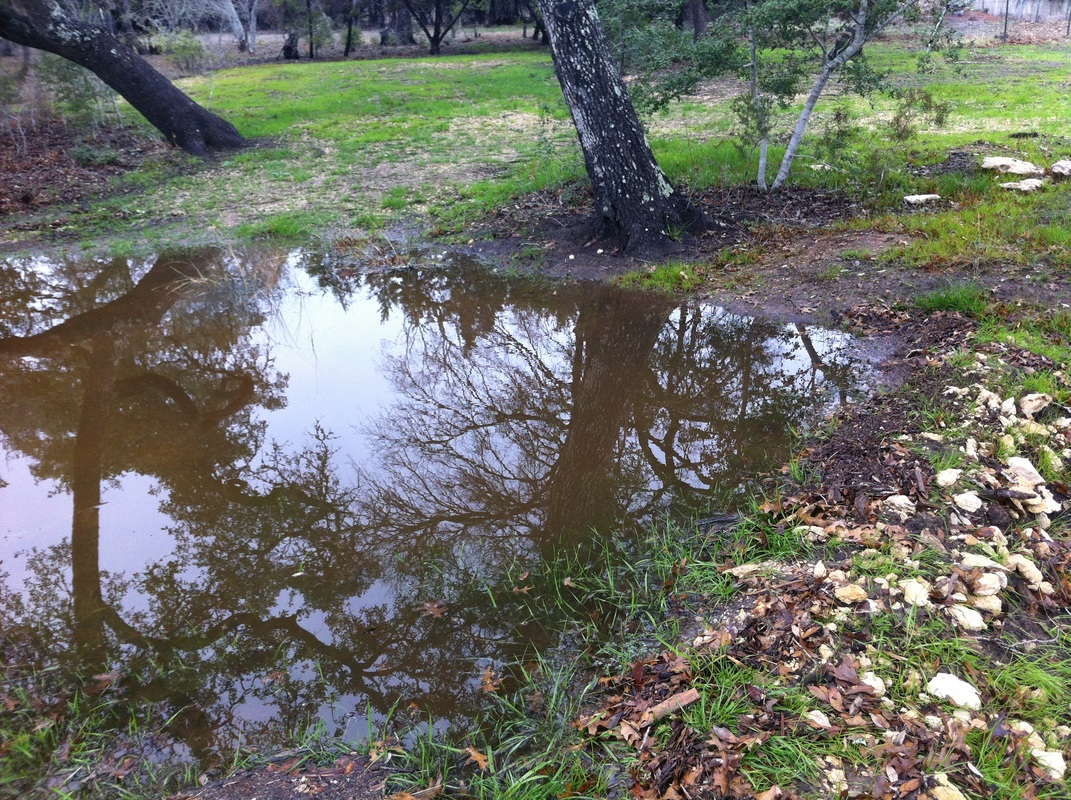Sustainable land management means managing land without damaging ecological processes or reducing biological diversity. Key elements of land management include healthy, productive soil and fresh water. As natural water supplies such as creeks, rivers and lakes dried, the youngsters of the wildlife were the first to perish. Then the older animals began to dehydrate and starve. Feed prices have increased exponentially and in many instances it is no longer even possible to procure the types of hay needed for livestock.
The winter season has provided some relief with some light scattered showers on occasion, but most of the area still needs amounts of rain measured in feet to recover. This is not likely to happen as the La Nina event that has stubbornly been in place during the winter of 2010-2011 and the winter of 2011-2012 will dissipate too late to provide rain to the U.S. Southwest because the rainy season will be over by that time.
In the meantime, surface water isn't yet making its way deep enough into the soil to help large trees, much less into water tables and well pumps have gone dry or are being ruined as they pump up large amounts of sand. As a result, there remains a desperate need to maximize the use of our water resources while helping to get rainwater back into the water table as opposed to running into gutters, sewers, culverts and eventually rushing out to sea - often eroding the best top soil in the process.
A few months ago we attended a permaculture seminar with guest speaker Gary Freeborg. Gary opened his seminar with a map of the United States from approximately 200 years ago and asked us what was fundamentally different between now and then. The answer was the beaver. Beavers used to sculpt the land, slowing water run-off and creating reservoirs. The beaver were hunted off and the dams they had built were no longer there to help slow rainwater run-off. Gary's call to action was all of us can contribute to the preservation of land by bringing together various disciplines to help jump-start the cycles that nature used to implement..
Sculpting and preparing the earth to direct, absorb or hold water is something that virtually anyone can do and requires little to no expense, regardless of what kind of property you have be it an urban or suburban lot, commercial building landscape or acreage in the country. Inspired by Gary's talk, we decided to do some sculpting of our own.
The first thing we did was observe the existing contours of our property. Some of it seemed to be natural, but other parts had been negatively impacted when construction had occurred on the property. Loads of dirt were excavated and left standing about with no particularly purpose or reason. Low lying areas had been artificially created that exacerbated run-off problems. Because we also use a roof rainwater collection system we have a low-point drain that is used when the tanks are full and also wanted to retain as much of that water as possible as opposed to letting it flow to the culverts and out to the road. Many urban residents will find their property exhibits many of same characteristics and if you don't use a roof rainwater collection system, much of the water collected in your gutters will flow eventually into your neighborhood sewer system never allowing the water to benefit the plants and animals the way nature had intended.
First we tackled the run off areas which were already experiencing significant erosion from previous rains, but also from the drought and the wind carrying away the soil once the roots of the grasses could no longer survive in the drought. The job was easy enough - we simply built a small U-shaped berm, then added in some rocks on both sides to reinforce it. Where it made sense, we also incorporated branches and sticks that had fallen from neighboring trees, much like the beavers would have done. Because we have a pool with a cover in this area, we then pump any rainwater that collects on the pool cover into this retention area so the water can be allowed to slowly seep into the ground and provide much needed relief for the large oaks trees that sit along the periphery of the collection area.
Some of this moved dirt had minimal nutritional value, so we decided to amend the dirt by mixing in some of our homemade compost. After amending the dirt we sprinkled it with grass seed to help hold the dirt in place. We also planted beans and okra, both of which will take advantage of the sunny growing location. In addition, the beans can take advantage of the fence line as a support structure for when they begin to climb. The new plants also produce flowers and fruit which is good for the bees and wildlife.



 RSS Feed
RSS Feed
